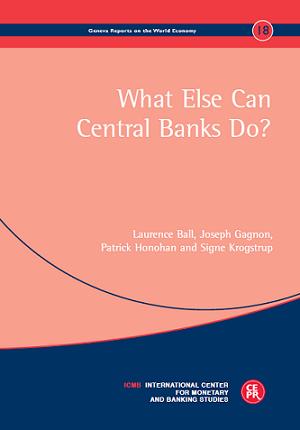Ball, Laurence, Gagnon, Joseph, Honohan, Patrick, Krogstrup, Signe, (2016), “What Else Can Central Banks Do?”, ICMB – CEPR, Geneva Reports on the World Economy 18, September
The Geneva Reports on the World Economy are published annually by CEPR and ICMB and have been providing innovative analysis on important topical issues facing the global economy since 1999. This 18th report focuses on what central banks can do to stimulate economies when interest rates have reached zero. The authors argue that the negative interest rates and quantitative easing used by central banks in advanced economies since 2009 have been effective and that such policies could be expanded if needed. To lessen future constraints on policy from the lower bound, the authors suggest that central banks consider adopting a modestly higher inflation target in the context of a periodic review of monetary policy objectives and operating procedures. They also propose options that could be adopted by policymakers to provide further stimulus in economies with underemployment and below-target infation. First they suggest that pushing interest rates further below zero can be done without adverse consequences. The authors argue that combining this with expanded quantitative easing, which has already been proven useful, is a means by which central banks can increase the level of stimulus. They also discuss the idea of a cashless economy, which would solve the lower bound problem by eliminating a riskless asset with zero nominal returns. This is not currently politically or practically realistic, but the authors would like to see it discussed as a future solution.
Relevant Posts
- Jung, Alexander, (2016), “Have monetary data releases helped markets to predict the interest rate decisions of the European Central Bank?”, European Central Bank, No 1926 / July
- Demertzis, Maria, Wolff, Guntram B., (2016), “The effectiveness of the European Central Bank’s Asset Purchase Programme”, Bruegel, 23 June




